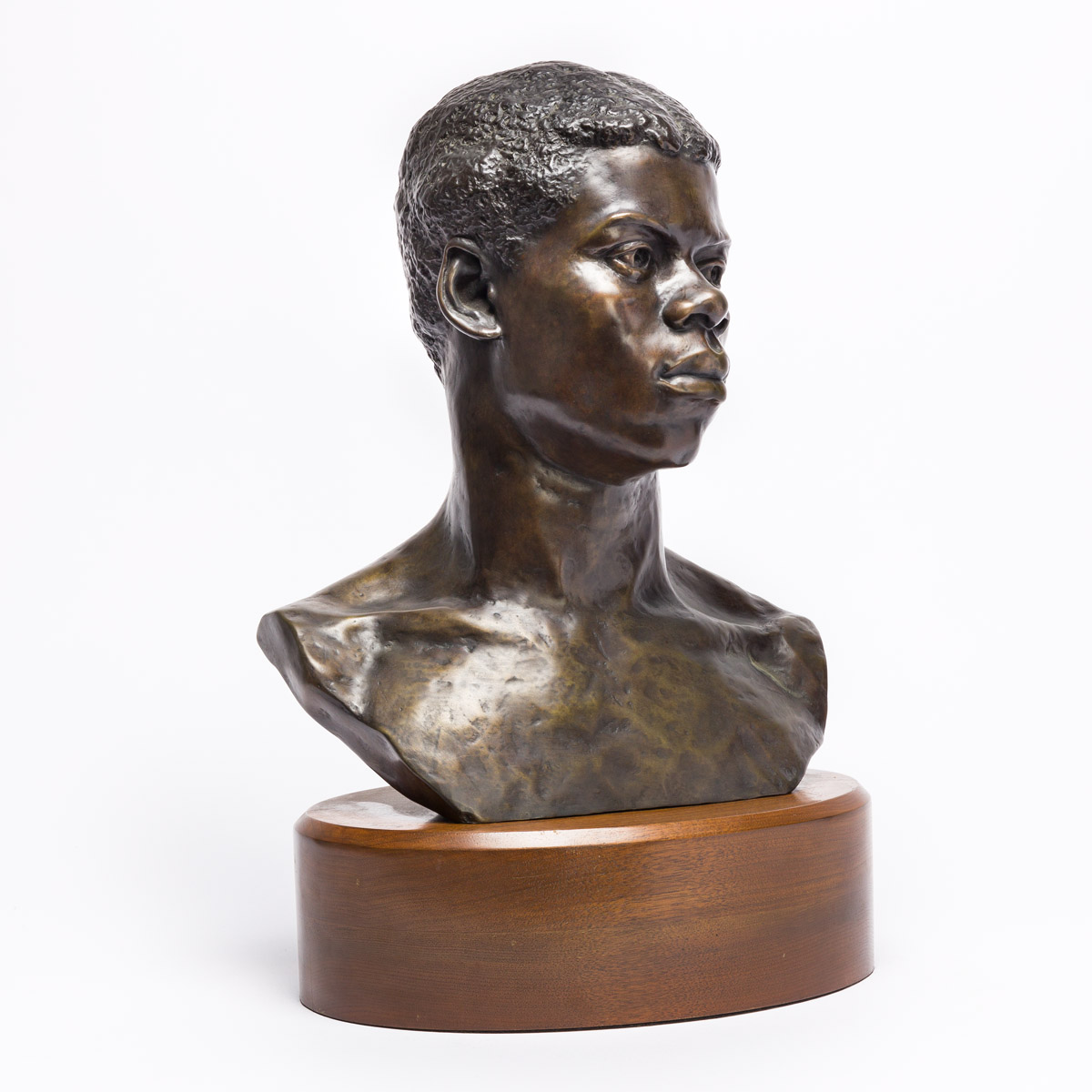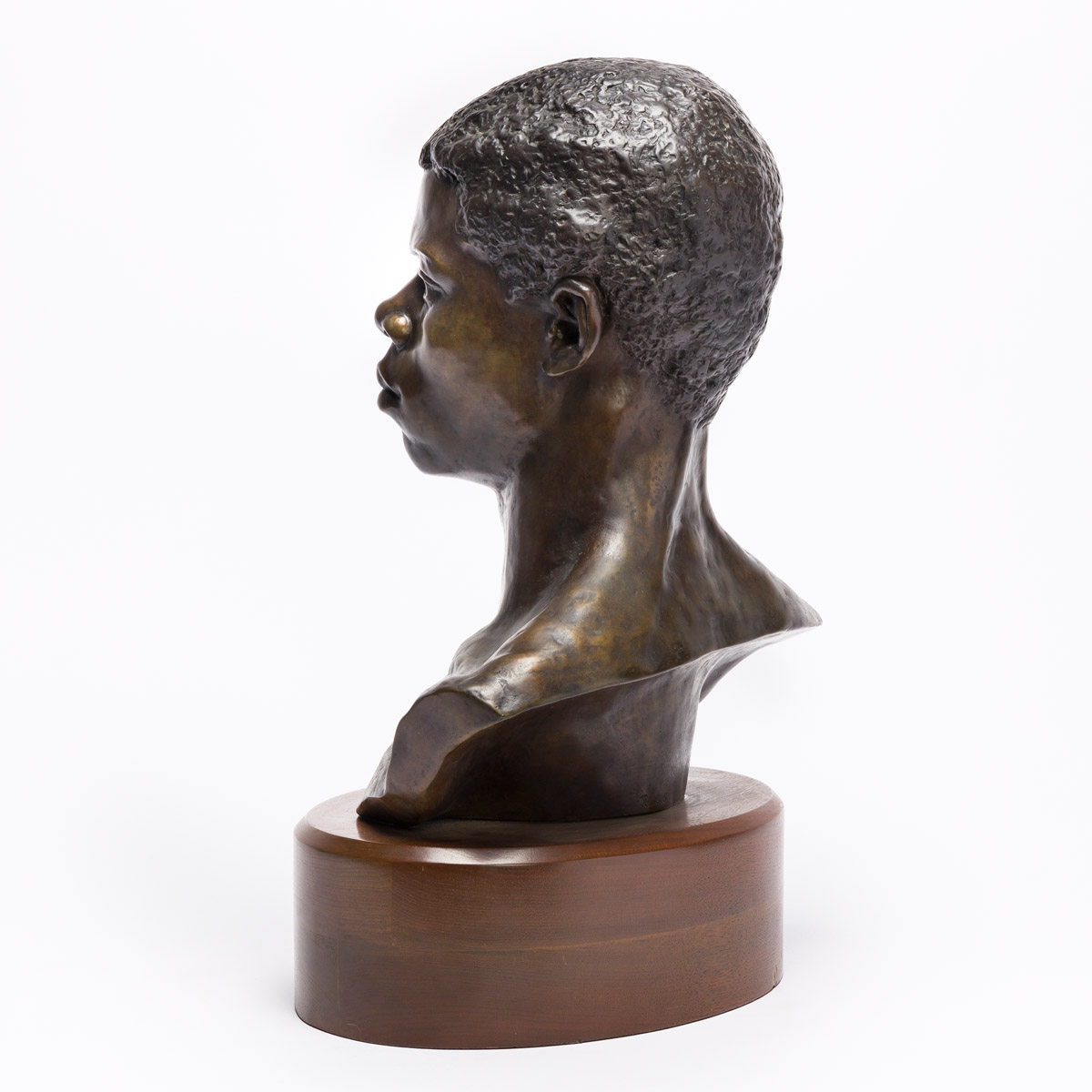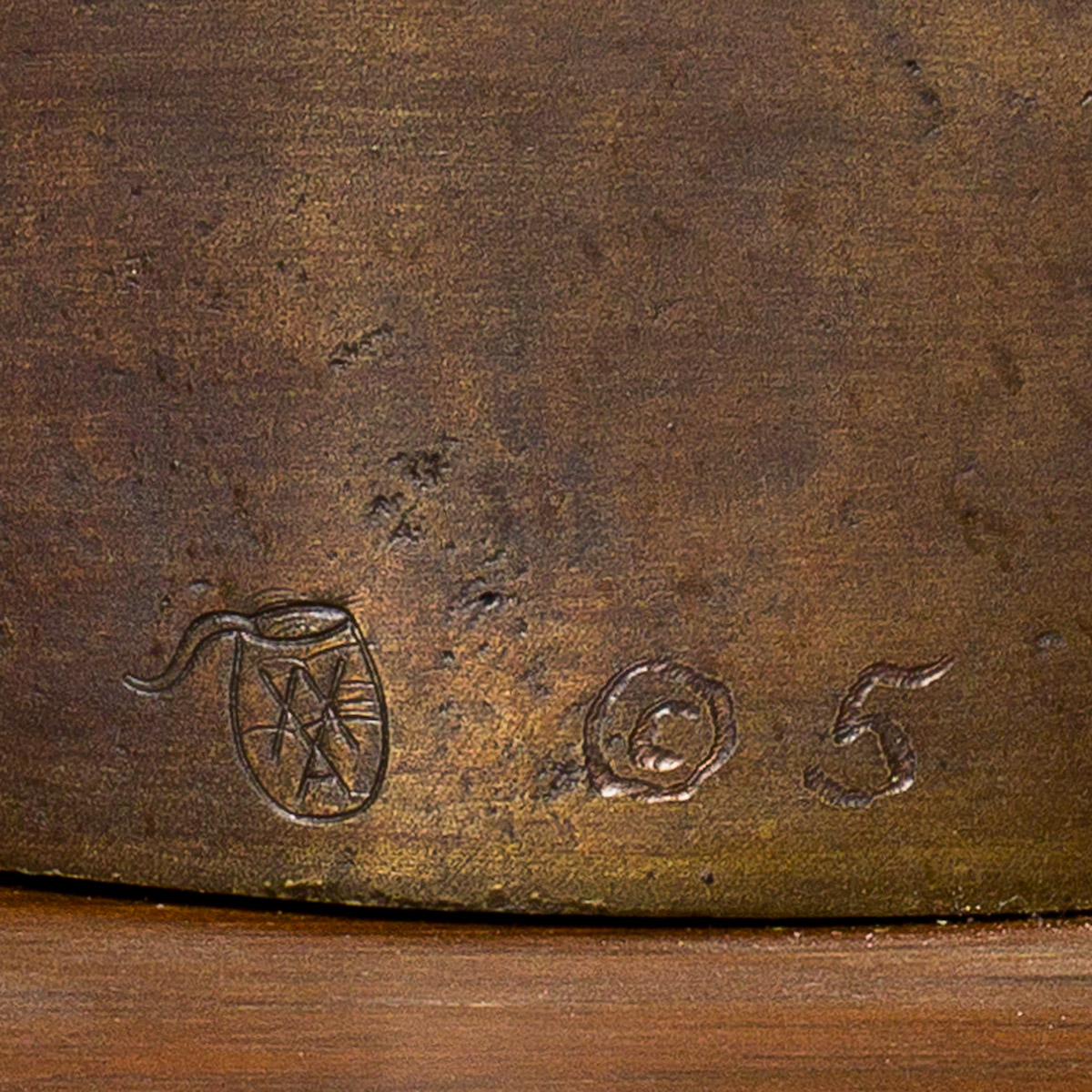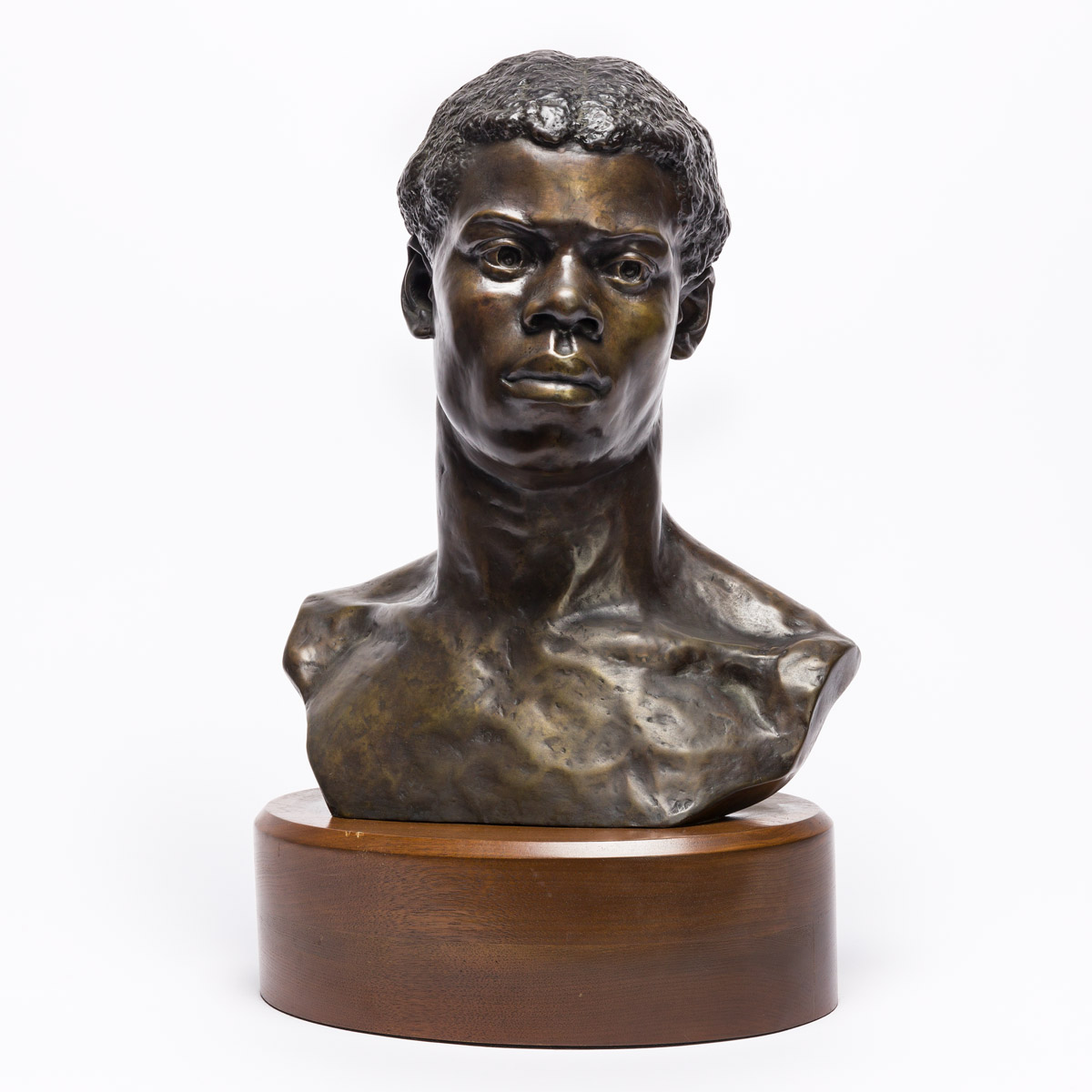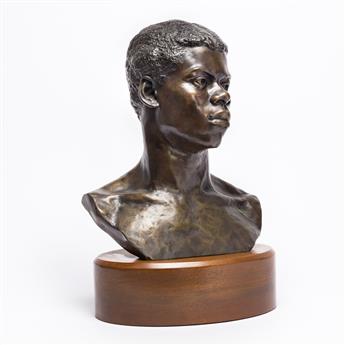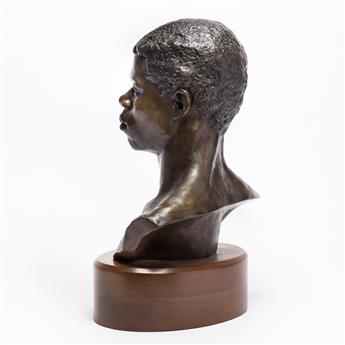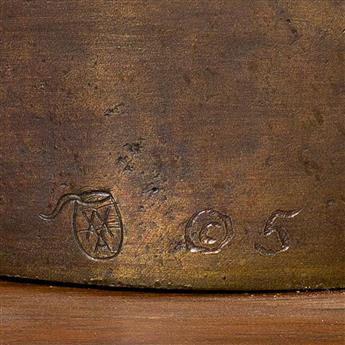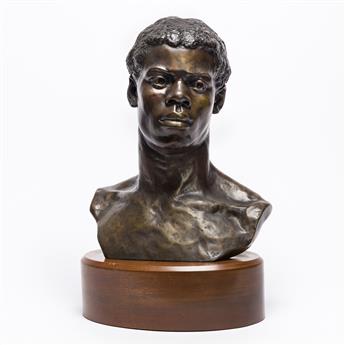Sale 2599 - Lot 1
Unsold
Estimate: $ 8,000 - $ 12,000
MAY HOWARD JACKSON (1877 - 1931) (AFTER)
Slave Boy.
Bronze with a dark brown patina, mounted on a wooden base, 1899. 406x330x203 mm; 16x13x8 inches, not including the base. Cast in the 1980s. Incised with the maker's cypher, "5" and "©" at the rear lower edge.
Illustrated: The Catalogue of the Barnett-Aden Collection, the Museum of African American Art, Tampa, FL and the Florida Education Fund, another cast, p. 26.
This handsome bust is a posthumous work made when director Adolphus Ealey had bronze casts fabricated after works in the Barnett Aden collection - it was not cast from an original mold. Other similar casts of Slave Boy are in the collections of the Pennsylvania Academy of the Fine Arts, the Kinsey African American Art Collection and the William C. Robinson Family Collection.
May Howard Jackson is one of the earliest African American female artists, alongside Edmonia Lewis (c. 1843 - 1912) and Meta Warrick Vaux Fuller (1877 - 1968). Born in the same year, Jackson and Fuller both came from privileged families that embraced fine art and studied at the Pennsylvania Museum School as well as the Pennsylvania Academy of the Fine Arts. Jackson won a scholarship to attend in 1895, the year before Fuller - becoming the first African American woman to attend. She married in 1902, and moved to Washington, DC, establishing a studio there and exhibiting at the Corcoran Gallery. In 1912, she exhibited busts of F. J. Reverend Grimke and W. E. B. Du Bois at the Verhoof Galleries in Washington, DC, which received critical acclaim. Nevertheless, she was rejected by the Washington Society of Fine Arts and the National Academy of Design. She later joined the faculty at Howard University, where she taught with James A. Porter, and continued to exhibit her artwork at the Harmon Foundation and the Barnett-Aden Gallery. Farrington pp. 72-74; St. James p. 266.
Slave Boy.
Bronze with a dark brown patina, mounted on a wooden base, 1899. 406x330x203 mm; 16x13x8 inches, not including the base. Cast in the 1980s. Incised with the maker's cypher, "5" and "©" at the rear lower edge.
Illustrated: The Catalogue of the Barnett-Aden Collection, the Museum of African American Art, Tampa, FL and the Florida Education Fund, another cast, p. 26.
This handsome bust is a posthumous work made when director Adolphus Ealey had bronze casts fabricated after works in the Barnett Aden collection - it was not cast from an original mold. Other similar casts of Slave Boy are in the collections of the Pennsylvania Academy of the Fine Arts, the Kinsey African American Art Collection and the William C. Robinson Family Collection.
May Howard Jackson is one of the earliest African American female artists, alongside Edmonia Lewis (c. 1843 - 1912) and Meta Warrick Vaux Fuller (1877 - 1968). Born in the same year, Jackson and Fuller both came from privileged families that embraced fine art and studied at the Pennsylvania Museum School as well as the Pennsylvania Academy of the Fine Arts. Jackson won a scholarship to attend in 1895, the year before Fuller - becoming the first African American woman to attend. She married in 1902, and moved to Washington, DC, establishing a studio there and exhibiting at the Corcoran Gallery. In 1912, she exhibited busts of F. J. Reverend Grimke and W. E. B. Du Bois at the Verhoof Galleries in Washington, DC, which received critical acclaim. Nevertheless, she was rejected by the Washington Society of Fine Arts and the National Academy of Design. She later joined the faculty at Howard University, where she taught with James A. Porter, and continued to exhibit her artwork at the Harmon Foundation and the Barnett-Aden Gallery. Farrington pp. 72-74; St. James p. 266.
Exhibition Hours
Exhibition Hours
Aliquam vulputate ornare congue. Vestibulum maximus, libero in placerat faucibus, risus nisl molestie massa, ut maximus metus lectus vel lorem.



